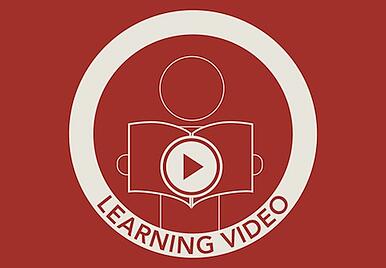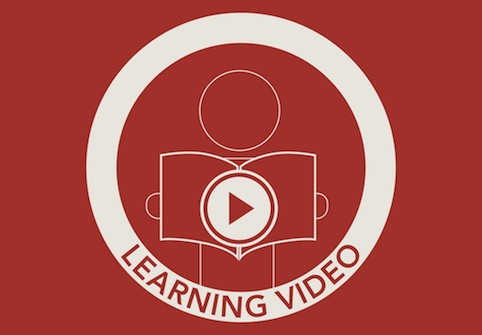 Research tells us that video and demonstration is one of the best ways to teach new skills or behaviors because of our ability to learn through mimicking others' actions. Can you imagine how difficult it would be to teach someone how to do a cartwheel through written word compared to showing them? From birth, this is how we have learned—by listening and watching others interact and then leaping forward to try it on our own.
Research tells us that video and demonstration is one of the best ways to teach new skills or behaviors because of our ability to learn through mimicking others' actions. Can you imagine how difficult it would be to teach someone how to do a cartwheel through written word compared to showing them? From birth, this is how we have learned—by listening and watching others interact and then leaping forward to try it on our own.
This is why video—whether delivered in class or online, has been proven to engage and successfully teach learners new skills and theories; and why it is a favorite tool used by instructional designers. Due to the fact that face-to-face interaction is largely removed from online learning, an additional benefit of video in eLearning is that provides personable human elements that are lost through text. While creating video for first time can seem daunting, there are ways to modularize tasks so that the overall process is fairly painless. Here are 3 tips for incorporating video in eLearning.
1. Budget if you want Custom Video
Many instructional designers are finding interesting and relevant videos on YouTube and repurposing them into eLearning lectures or training. Often times though, if you are creating a new course from scratch or need to design specific training modules, outsourcing to a video production team might be your best bet. If needing to outsource, be sure to budget anywhere from $5,000-10,000 depending on the scale of the project. If you are working with a smaller budget, try reaching out to local film schools that can connect you with talented students who often charge out at a less expensive rate.
2. DIY? Purchase the Right Equipment
If you plan to have video needs well into the future, it is likely more cost effective to create content in house. This means you will need to source equipment and talent for editing. For equipment you will need a camera and a tripod, lighting, an audio recording device, and a sound proof room. Depending on the quality of video you want, anything from an iPhone to DSLR camera will work just fine. To edit video, you will need to hire someone with experience in Adobe Premiere or Final Cut Pro—the most popular software for editing video. For more tips on what you what you will need to set up your film studio and the types of lighting/sound equipment you will need here is a compilation of helpful videos.
3. Keep it Simple Stupid
While it is fun to get creative, make sure the objectives for your video(s) are clear from the outset. Think clearly about what eLearners stand to gain from the video content and ensure your storyboard/script addresses the learning objectives. The best videos are short, concise and engaging so make sure you keep the script fun and conversational, but to the point. If you are modeling a skill or behavior, try breaking it up into 2-3 minute bite sized snippets. To ensure viewers are benefiting from your videos, a creative way for them to demonstrate their newly learned skills is to task them with creating their own videos that showcase scenarios where they are physically applying the skill.
Now that you understand WHY it is beneficial to incorporate video into your eLearning courses and tips on how to do so, check out our webinar on how to utilize video in your current learning management system:





